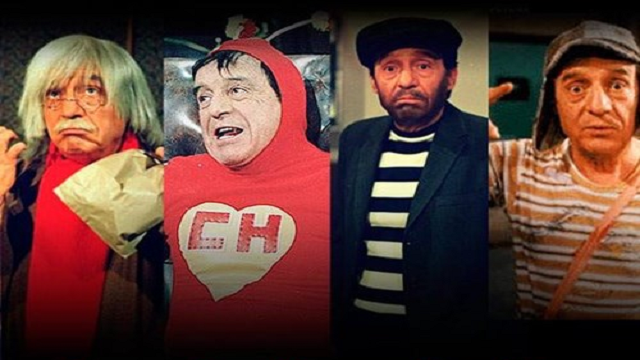Some of Roberto Gomez Bolaños’, better known by his nickname Chespirito, work include, from left to right, “Dr. Chapatin,” “El Chapulin Colorado,” “Los Caquitos,” and, his most popular show, “El Chavo del Ocho.” Picture courtesy of Tretente on Tumblr.
By Julio Avila
Staff Writer
Screenwriter, actor and comedian Roberto Gomez Bolaños, better known by his nickname Chespirito, died on Nov. 28, 2014 from a heart attack in Cancun, Mexico. He was 85.
Chespirito, born on Feb. 21, 1929 in Mexico City, was widely known across Latin America for his work in shows such as “Dr. Chapatin,” “El Chapulin Colorado,” “Los Caquitos,” and, his most popular show, “El Chavo del Ocho.” His characters were well-recognized, from El Chavo wearing a tattered shirt, overalls and a green checkered hat, to El Chapulin Colorado with his red spandex suit, yellow boxers worn on the outside and red mallet.
After the announcement of his death, fans gathered in his native Mexico and elsewhere to mourn him. Some mourned while dressed as characters from Chespirito’s shows. Mexican celebrities also paid homage to Chespirito. Eugenio Derbez, a comedian, posted a YouTube video and said the death of Chespirito was a major loss.
“Chespirito’s talents have no expiration,” Derbez said. “I’m sure my kids, grandkids and great grandkids will continue laughing with him always.”
Carlos Villagran, who co-starred with Chespirito as Kiko on “El Chavo,” said, in an interview on a local Telemundo affiliate, that he felt distraught over Chespirito’s death as memories infiltrated him.
“At that moment, everything came on top of me,” Villagran said. “At the same time, you are mute, you are tense.”
Around campus, Latino students, who make up 10 percent of university student population according to the College Board, have fond memories of Chespirito. Many grew up watching his shows.
Gabriel Rudas-Burgos, a Ph.D student in Hispanic Languages, said he grew up watching Chespirito’s shows such as “Los Caquitos” and “El Chapulin Colorado” as a child in his native Colombia. He was not entirely a fan of “El Chavo.”
Paula Oyarce, a Spanish literature major, said she liked watching “El Chavo” and “El Chapulin Colorado” as a child in her native Chile. Her parents and older sister also watched those shows as kids.
“He was such an influence for Hispanic people,” Oyarce said. “It doesn’t matter what generation you were born.”
Chesipirto’s work was not only entertaining, but also demonstrated the struggles of marginalized people. Such depictions included characters who society deemed weak and of low class.
“He’s always showing us the life of the powerless, the life of the margins of the big society, but also the life of children,” Prof. Adrian Perez-Melgosa, professor of cinema and literature at the Department of Hispanic Languages and Literature, said. “His shows focused on those people that, in general, society portrays as not the important ones.”
Perez-Melgosa noted how “El Chapulin Colorado” was a superhero, but had no powers or special abilities. The role demonstrated how even though the hero was in some ways weak, he could still overcome villains fighting against him.
“He was able to intervene favorably in many of those circumstances,” Perez-Melgosa said. “He made a mess of them, but the mess actually was something good.”


